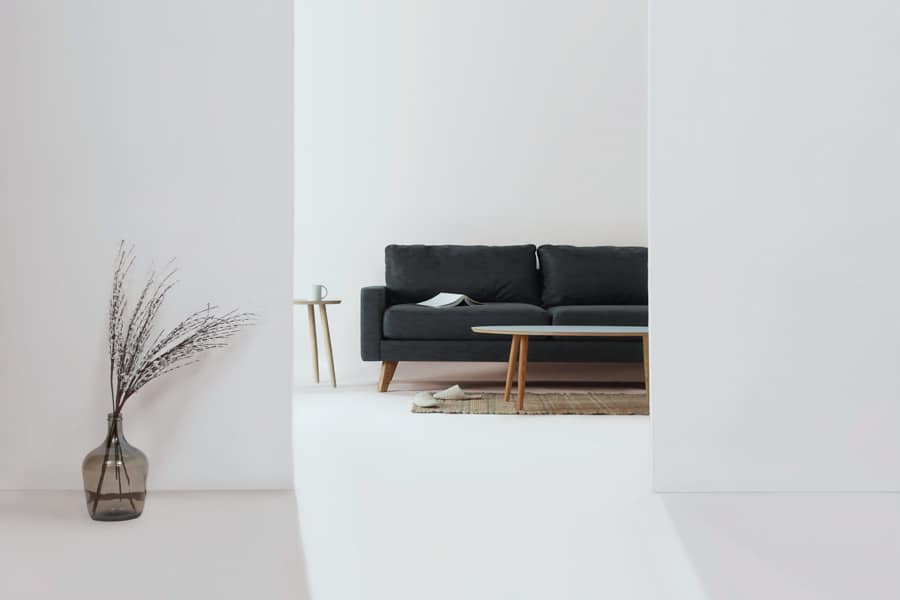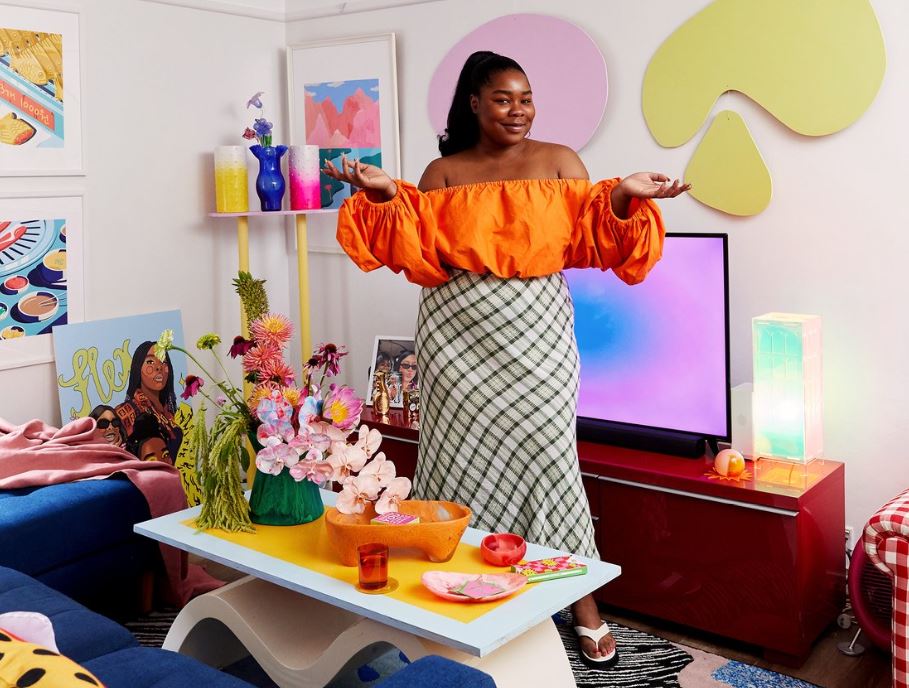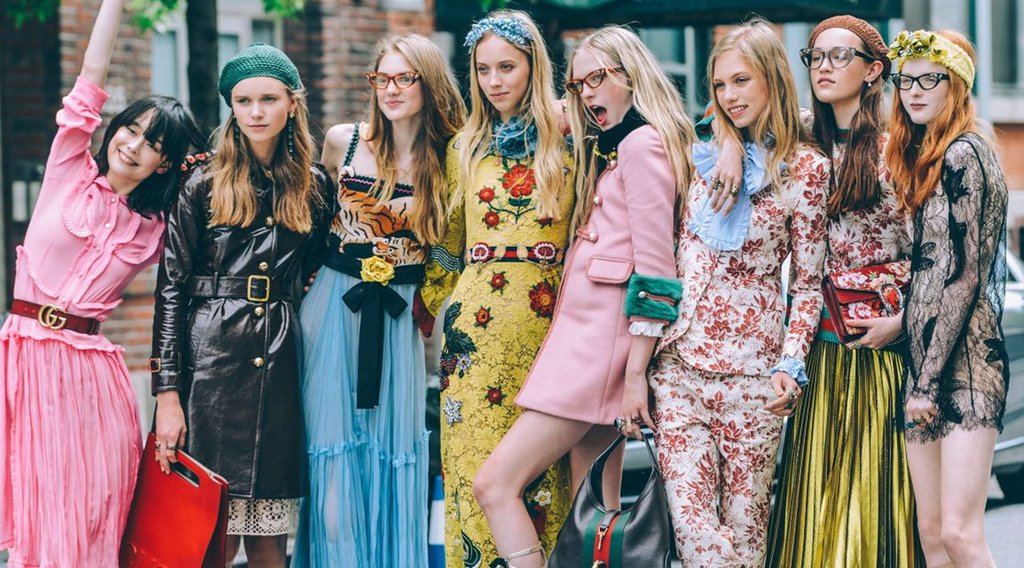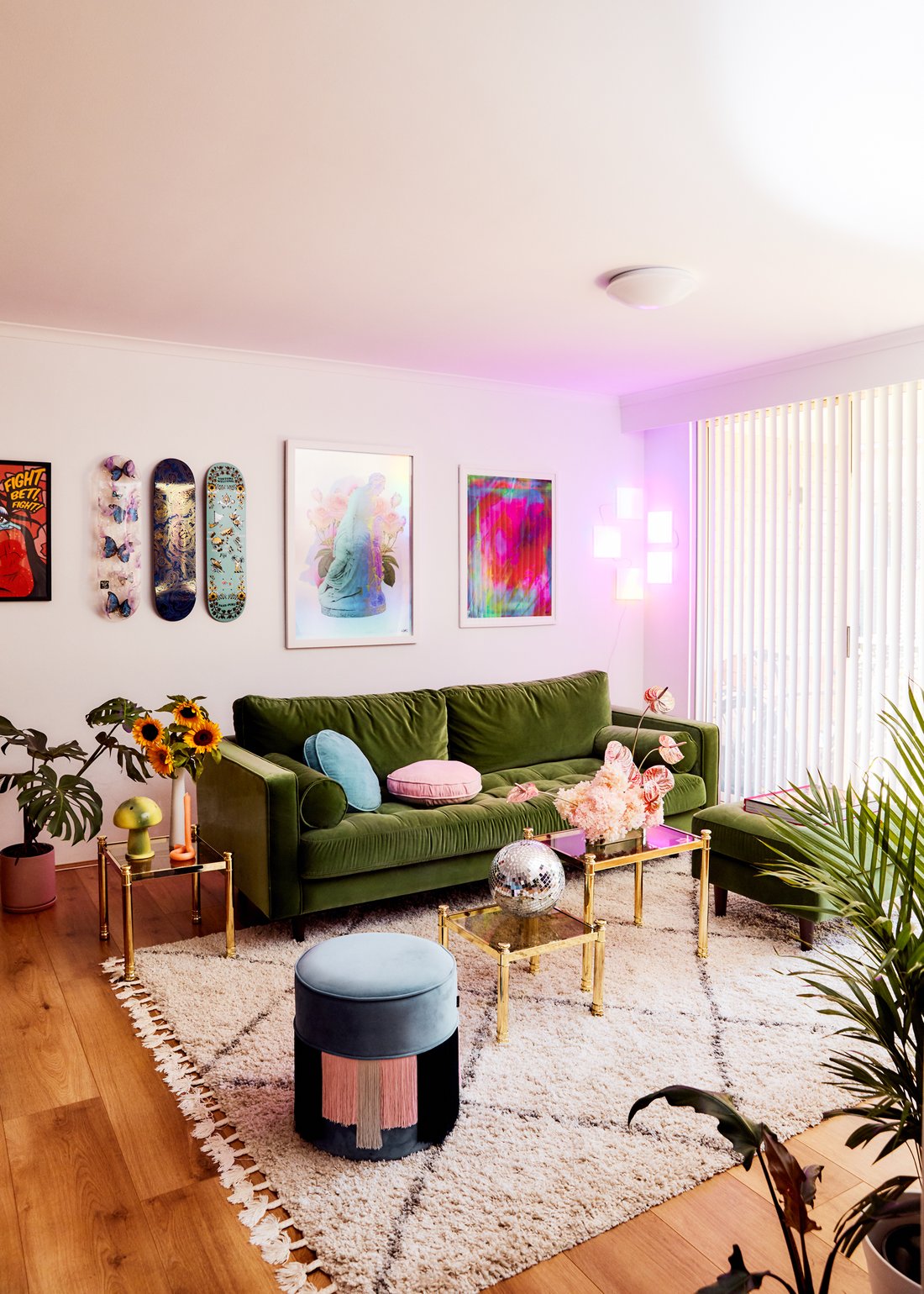After what feels like a decade-long minimalism movement, maximalism is re-entering the worlds of fashion, interior design and personal aesthetic.

Both maximalism and minimalism have in some way existed since the beginning of time. The way in which people place their possessions and portray themselves is a part of the human condition. But their modern concepts and ideas as a realised aesthetic and decor scheme are more recent, with heavy links to fashion, interior design, and the essence of a person.
The Reign of Minimalism
Like all trends, things go in and out of style. But as maximalism makes a comeback to oppose the notions of its predecessor, notably, minimalism’s reign did the same.
Minimalism in art and style was introduced in the Western world in the 1950s and 60s through geometric shapes and straightforward designs. Although, at the time this was abstract.
The funky 70s and the bright disco 80s created bold colours, textures and fashion. Then the 90s and early 00s saw a growth in consumerism, accessibility, and advances in technology. Commodities became a sign of popularity and wealth. Grunge and the underground music scene were prominent. Teenagers had posters all over their bedroom walls to showcase youth, individuality and rebellion.
Following this, minimalism occurred in the 2010s as a welcome change to newer times and values. The rise of multinational companies like apple were part of the shift towards uniformity and having simple and non-obstructive possessions. The elegance of fewer objects and neutral fashion therefore became a representation of modernity, simplicity and affluence.
The idealism of a white wall, wooden table, and perfectly posed coffee mug took over. The trend grew over the 2010s and the aesthetic has been adopted by millions of Instagram users and influencers, boasting the “less is more” mantra.
It also weaved through a period of advocating for increased self-worth and meta-critical thought around consumerism where ‘having more with less’ became a philosophy.
Minimalism Wanes

The power of minimalism is that it’s neutral. Everyone can be part of it and it offends no one. Every object or piece of clothing feels perfectly hand-placed in its exact situation.
And more recently, with the help Marie Kondo’s organisation expertise, it has transformed into a method of “de-stressing” and de-cluttering”.
But the actual trend of minimalism as an aesthetic brings an air of “expected perfection”. And it seems, that following a pandemic and the global events of the past couple of years, the mood of social media recognises that life can be unexpected and imperfect.
Founder and CEO of Homepolish, Noa Santos told Lonny,
“Design is like a pendulum — when it swings too far in one direction, the reaction is to swing back with equal force.”
Wielded with changes in fashion, increased environmental consciousness, and the rise of TikTok and Gen-Z habits, this has created a shift from the ideals of perfection to an ethos of realness, eclectic style and individuality.
What is Maximalism?
Recently, our feeds, homes and runways have been filled with diverse and eye-catching style.
Maximalism is loud. It relies on unique and bold colour palettes and one-of-a-kind pieces that make up a room. It involves layering, mixing and matching colours and textures.

As such, maximalism is much more personal than minimalism. It allows for creativity, experimentation and breaking conventions where influencers are now saying “more is more”.
Take best-selling author, podcaster and Instagram influencer Lillian Ahenkan (aka @FlexMami). Her home is overflowing with vivid colour, individuality and mismatched patterns.
“If I want to live in a space that inspires me, I have to do it on my own,”
the influencer told Domain.
While maximalism has long been confused with mess and disorder, it is in fact very particular. Influencer Sarah Walsh McIntyre (@theflamingoandthefox) also told Domain that her take on maximalism is “considered” and she has to like every piece she uses, and consider it in accordance with other possessions.
It is about personal expression where having a lot does not necessarily equate to clutter. “People who identify as maximalists aren’t in the business of hoarding for hoarding sake”, Ahenkan said.
A New Wave of Maximalism
Maximalist fashion is nothing new. Major brands like Gucci and Comme des Garçons have been consistent in their use and appraisal of maximalist designs and values. But what has changed is the multitude and accessibility of it. The return to bold colours, textures and designs is now being utilised by everyone from influencers and interior designers to unknown homebodies and small-town cafes.
TikTok has been a key tool in this movement. Influencers sharing their home decor and creative process alongside videos explaining how to make statement pieces, create patchwork or alter vintage pieces have made maximalism achievable and popular. It has also become a way for people to showcase their cultures and differences.
Influencer and beauty artist, Rowi Singh (@rowisingh) shows her creative maximalist style and the power of it in her TikToks, on her Instagram (@rowisroom) and in her makeup art. Singh told Bed Threads,
“I love being able to visually communicate the strength and power of women, especially women of colour.”
Nostalgia and the push for sustainable fashion have also popularised secondhand and vintage clothing and furniture. This growth in up-cycling and supporting small designers instead of fast-furniture from big brands boosts environmental awareness and originality.
Ultimately, there is something very intentional about the busy feel of maximalism. It gives a tone of personality, identity and cosiness. According to a Reader’s Digest article, creativity loves chaos and can also be linked with signs of genius.
The New Trend

The thing about minimalism is that it will always exist somewhere and in some way. It comprises neutrality, tranquillity, and simplicity which will always be admired by certain people and certain spaces like upscale hotels, wellness spas and austere offices.
So, minimalism is not gone. But its replacement as the universally trending aesthetic for popular interiors and fashion welcomes a new generation of creativity, expression and innovation. It allows for the sentiment of today’s youth, best captured by a Jack Nicholson line in Martin Scorsese’s The Departed, “I don’t want to be a product of my environment. I want my environment to be a product of me.”
Maximalism projects the complexity, self-identity and unapologetic-ness of today’s people and world. The trend is bound to be an exciting and evolving look that will one day be remembered as a sign of the times.
Subscribe to FIB’s Weekly Alchemy Report for your weekly dose of music, fashion and pop culture news!








